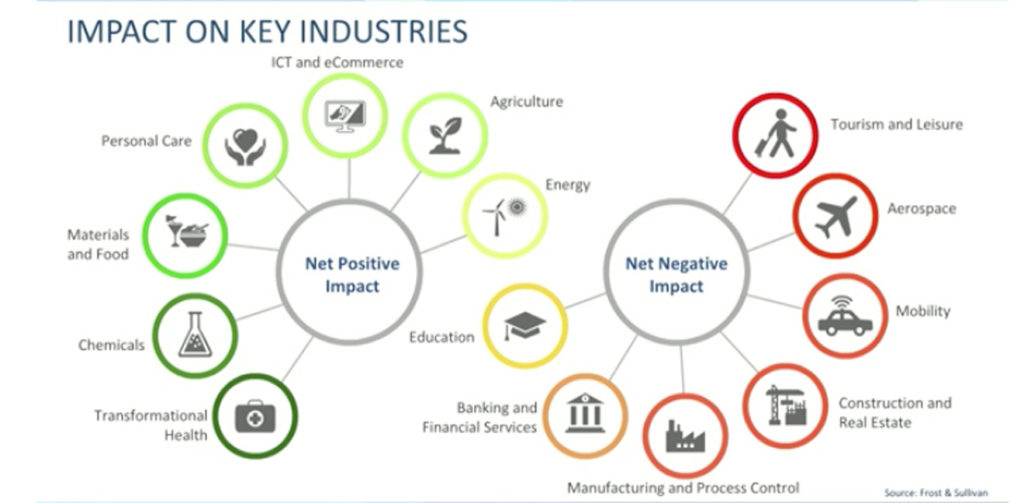Many IT professionals have been in a rapid response mode since the COVID-19 pandemic led to business shutdowns and shelter-in-place orders around the world. The need to shift contact centers and other departments to a work from home (WFH) platform has been the top priority day after day.
But as things settle down to a “new normal,” IT professionals should take a deep breath and think about the best strategies for moving forward once economic activity rebounds. While no one knows when various global markets will open up, it is clear that unified communications and collaboration using cloud platforms will play in increasingly important role in serving customers, employees and partners.
“Now is the time to accelerate the digitization of your company, so you can come out of the pandemic with a competitive advantage,” said Aroop Zutshi, global president and managing partner, Frost & Sullivan, in a recent webinar, “Market Impact of COVID-19: How to Respond, Reset and Rebound.”

To date, the pandemic has had a negative impact on industries like travel, tourism and education. However, it has also spurred activity in areas like healthcare, consumer goods, technology and ecommerce. “Achieving growth in the next year will be very challenging for many organizations,” he said. “Much depends on the length of the recovery curve. We anticipate a recession at least through 2020, with recovery beginning in first quarter 2021 and growth returning later in the year.”
But Zutshi urges IT organizations to beginning planning for the future. He suggested taking several hours of downtime every week to think about how your organization can resume its growth strategy in the months ahead. “You can build a pipeline of potential opportunities, thing about strengthening your current customer relationship and integrate new business models into your plans,” he said. “You can also evaluate partners and potential acquisition targets as part of your growth strategy.”
His colleague, Mark Simoncelli, SVP at Frost & Sullivan, suggested forming three teams within the IT organization for crisis management, growth opportunities, and digital transformation, including the design, development and management new products.
“Digital transformation will focus on generating and capturing new value,” he said.
Looking ahead, Zutshi said organizations should consider these types of digital investments include:
- Data analytics. “The use cases for big data analytics will proliferate,” he said. “That will help validate the value proposition across verticals.”
- Cybersecurity. Remote collaboration requires a greater focus on cloud security. Mobile banking and payments also increase the need for strong safeguards.
- Customer experience (CX). Virtual agents, chatbots and artificial intelligence (AI) applications are now a must have, Zutshi said. “New longer-term opportunities will emerge in business process automation and intelligent self-serve industries.”
- Cloud. Data protection and disaster recovery will be among growth areas as organizations update their business continuity plans.
- Blockchain. The need for data provenance and security will accelerate the demand for blockchain tools.
- E-learning. This will be important to organizations training remote workers, as well as schools and other academic institutions.
- Wireless. The pandemic highlights the urgent need for upgrading the digital infrastructure and deploying 5G.
Summing up the pandemic’s impact, Zutshi said it will take time for consumers to regain confidence. But an effective digital transformation strategy can help you be in the right position whenever that occurs.


Like!! Really appreciate you sharing this blog post.Really thank you! Keep writing.
What a stuff of un-ambiguity and preserveness of valuable experience regarding unpredicted
feelings.
It is actually a nice and helpful piece of info. I am satisfied that you just shared this useful information with us. Please keep us up to date like this. Thanks for sharing.